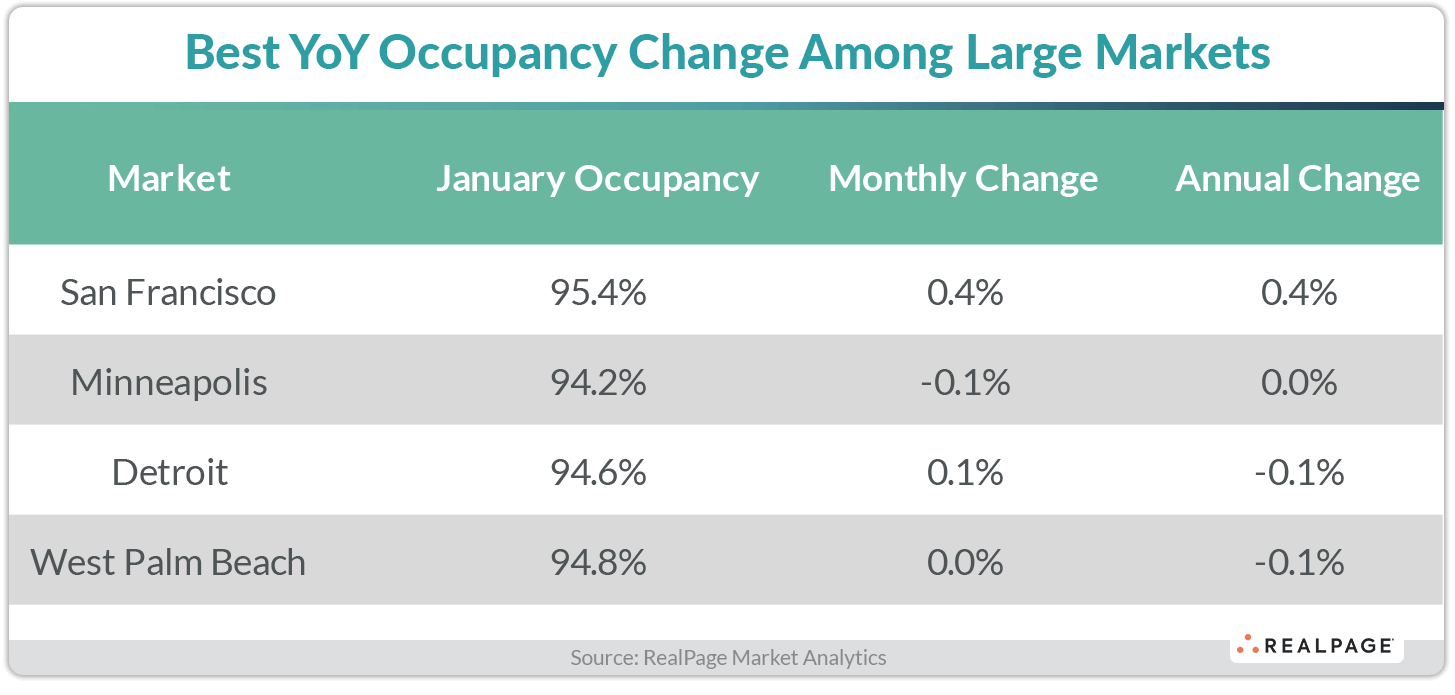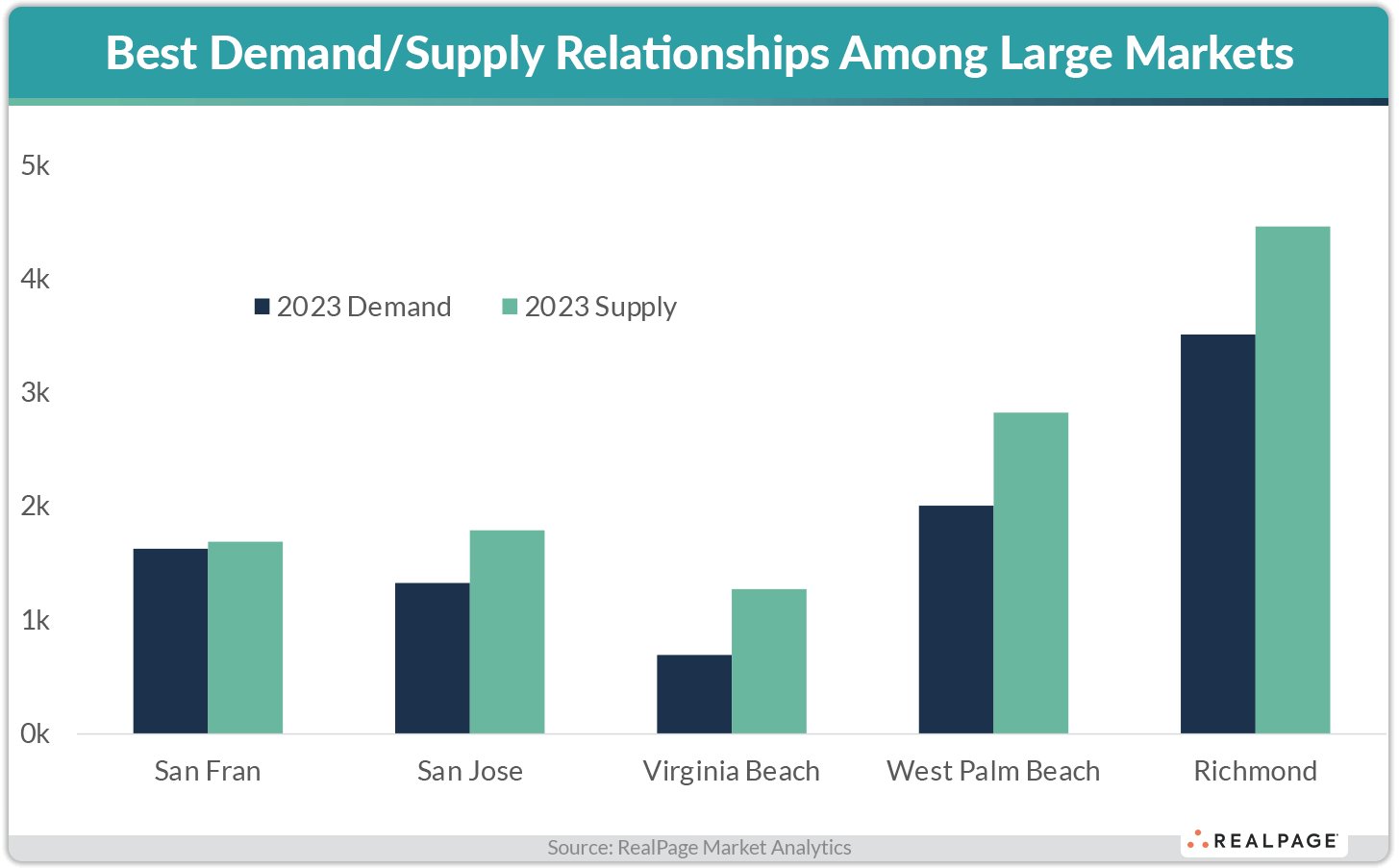San Francisco was the only large U.S. apartment market to record occupancy growth in the past year.
In the nation overall, apartment occupancy hit a decade low of 94.1% in January, after falling 70 basis points (bps) in the past year, according to data from RealPage Market Analytics. Most large apartment markets also saw occupancy contract in the year-ending January, with annual declines getting as deep as 150 bps in some big-supply Sun Belt markets. In fact, the only apartment market among the nation’s largest 50 to see any occupancy improvement at all in the past year was San Francisco.
Apartment occupancy in San Francisco climbed 40 bps year-over-year to land at 95.4% in January. The result was also a top-five national performance, beat out by only the occupancy showings in New York, Newark, Anaheim and Milwaukee.
This performance is a welcome respite, as the market took one of the hardest hits during the initial wave of the COVID-19 pandemic, when occupancy dropped as low as 92.2% in 2021.
Only a handful of other large markets saw either stagnant occupancy (Minneapolis) or very mild declines (Detroit and West Palm Beach) in the year-ending January.
San Francisco’s recent performance isn’t spectacular, especially compared to the market’s typical rhythm. But the market did avoid a decline that affected the rest of the nation’s big markets including other Bay Area giants San Jose (-20 bps year-over-year) and Oakland (-50 bps).
That resilience can’t really be chalked up to apartment demand. While San Francisco did account for about half of the overall annual demand tally in all of the Bay Area, demand in 2023 was not as strong as some other markets nationwide, nor was it up to par with what San Francisco typically posts.
However, demand for 1,623 units in San Francisco was relatively balanced with a reasonable amount of concurrent deliveries of 1,687 in calendar 2023. That’s only a 64-unit difference, the best supply/demand relationship among the largest 50 markets. In fact, the second-best performance was achieved by neighbor San Jose, where supply topped demand by a much more significant 461 units in the past year.
While San Francisco remains a hot spot for young residents attracted to the lifestyle it provides, population and job numbers have not been fantastic in recent years.
In the past year, roughly 18,300 jobs were added to San Francisco, a mild increase of 1.4%, per the Bureau of Labor Statistics. In comparison, the U.S. overall saw its employment base expand by 1.9% in the same time frame. And in the latest estimates from the U.S. Census Bureau, San Francisco’s population decreased by 0.8% in 2022. That was about in line with the decreases in other key gateway markets New York and Los Angeles.









